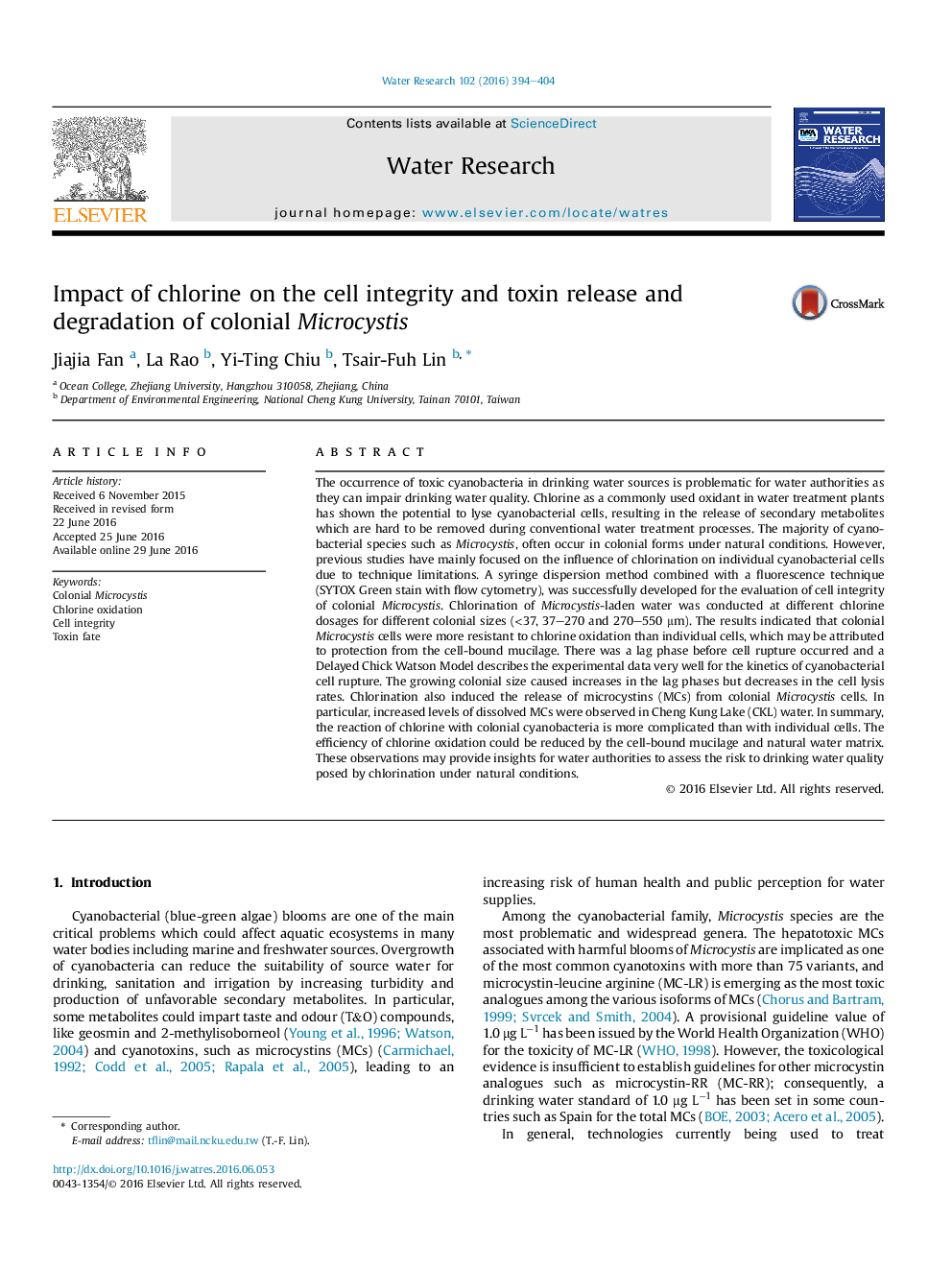| کد مقاله | کد نشریه | سال انتشار | مقاله انگلیسی | نسخه تمام متن |
|---|---|---|---|---|
| 4480869 | 1623066 | 2016 | 11 صفحه PDF | دانلود رایگان |
• Impact of chlorine on Microcystis aeruginosa cells depended on colonial size.
• The cell-bound mucilage prevented colonial M. aeruginosa cells from chlorine attack.
• A lag phase was existing before cell rupture occurred after chlorine addition.
• The Delayed Chick Watson Model well describes the kinetics of cell rupture.
The occurrence of toxic cyanobacteria in drinking water sources is problematic for water authorities as they can impair drinking water quality. Chlorine as a commonly used oxidant in water treatment plants has shown the potential to lyse cyanobacterial cells, resulting in the release of secondary metabolites which are hard to be removed during conventional water treatment processes. The majority of cyanobacterial species such as Microcystis, often occur in colonial forms under natural conditions. However, previous studies have mainly focused on the influence of chlorination on individual cyanobacterial cells due to technique limitations. A syringe dispersion method combined with a fluorescence technique (SYTOX Green stain with flow cytometry), was successfully developed for the evaluation of cell integrity of colonial Microcystis. Chlorination of Microcystis-laden water was conducted at different chlorine dosages for different colonial sizes (<37, 37–270 and 270–550 μm). The results indicated that colonial Microcystis cells were more resistant to chlorine oxidation than individual cells, which may be attributed to protection from the cell-bound mucilage. There was a lag phase before cell rupture occurred and a Delayed Chick Watson Model describes the experimental data very well for the kinetics of cyanobacterial cell rupture. The growing colonial size caused increases in the lag phases but decreases in the cell lysis rates. Chlorination also induced the release of microcystins (MCs) from colonial Microcystis cells. In particular, increased levels of dissolved MCs were observed in Cheng Kung Lake (CKL) water. In summary, the reaction of chlorine with colonial cyanobacteria is more complicated than with individual cells. The efficiency of chlorine oxidation could be reduced by the cell-bound mucilage and natural water matrix. These observations may provide insights for water authorities to assess the risk to drinking water quality posed by chlorination under natural conditions.
Figure optionsDownload high-quality image (373 K)Download as PowerPoint slide
Journal: Water Research - Volume 102, 1 October 2016, Pages 394–404
